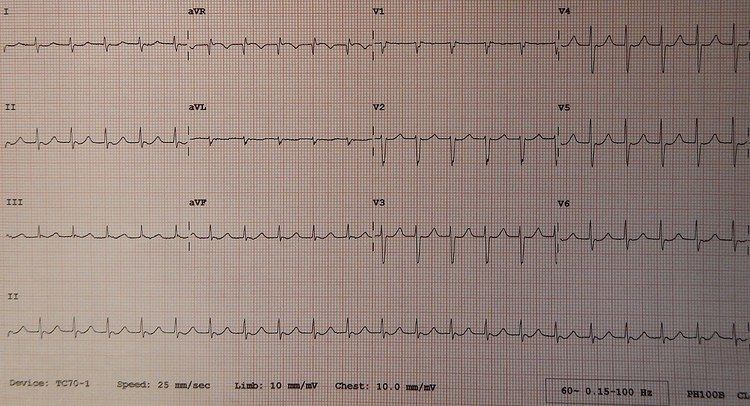ICD-10 I47.1 | ICD-9-CM xxx | |
 | ||
Junctional tachycardia is a form of supraventricular tachycardia characterized by involvement of the AV node. It can be contrasted to atrial tachycardia. It is a tachycardia associated with the generation of impulses in a focus in the region of the atrioventricular node due to an A-V disassociation. In general, the AV junction's intrinsic rate is 40-60 bpm so junctional tachycardia implies a rate >60 bpm.
Contents
Cause
It can be associated with digitalis toxicity. It may be also be due to onset of acute coronary syndrome, heart failure, conduction system diseases with enhanced automaticity, or administration of theophylline.
Diagnosis
On an EKG, Junctional Tachycardia exhibits the following classic criteria:
It can coexist with other superventricular tachycardias due to the disassociation between the SA node and the AV node. Junctional Tachycardia can appear similar to atrioventricular nodal reentrant tachycardia.
One form is junctional ectopic tachycardia.
